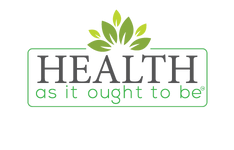
Could This Technique Kick Colds Faster?
This has been a pretty intense cold and flu season.
It’s not so much that people are getting so sick they can’t operate, but it’s the fact that people are getting sick, recovering, only to get sick again, and that has been pretty frustrating.
We’ve seen it in the office and reports are that it’s one of the worst flu seasons in decades.
I’m not necessarily interested in getting into the specifics of why…and I am far more interested in giving you additional layers of protection or therapies that can help reduce the duration of your illness or even prevent you from getting sick entirely (at least for that third or fourth time).
In fact, this is one of those health practices that would be good to employ any time you venture out into the world so you can fight off allergies, colds, and sinus infections (and more).
I’m referring to nasal irrigation.
It’s not the sexiest thing in the world, and as anyone who’s ever used a neti pot repeatedly knows, it’s not entirely pleasant, But the nice thing is it has empirical evidence to show it can and will work, and it is not going to break the bank or present all kinds of potential side effects.
What Is “Nasal Irrigation” and What Can It Do?
Nasal irrigation isn’t exactly new, but as people have become wiser to the potential downfalls of conventional medicine, it’s become more talked about.
It was Dr. Peter McCullough talking on Joe Rogan’s podcast several years ago that people started to become interested in nasal irrigation as the pandemic raged.
In the podcast, McCullough suggested that using a diluted betadine solution for nasal irrigation could help reduce viral load and potentially prevent or mitigate respiratory infections, such as COVID-19. Dr. McCullough emphasized the importance of early treatment interventions and suggested that disinfecting the nasal passages might serve as a simple measure to reduce the risk of infection.
Plenty of people started using nasal irrigation as a frontline defense and as a way to reduce the severity of colds, and I think that’s great, which is why I wanted to talk about it more in-depth today.
The practice of nasal irrigation is a pretty simple practice and involves using a saline solution to flush out your nasal passages. This helps clear out mucus, allergens, and other stuff that might be blocking your nose. It can make breathing easier and keep your nose feeling healthy and it can also prevent the colonization of bacteria or viruses so that they can’t further infect you.
Now, there are a few different ways to do nasal irrigation. This isn’t all of them but this list covers some of the more commonly practiced types of nasal irrigation.
1. Neti Pot:
The Neti pot is one of the more well-known forms of nasal irrigation. A Neti pot resembles a tiny teapot. Using it is simple; all you do is fill it with a saline solution, pour it in one nostril, and let it flow out the other. It's a classic method and really effective for cleaning out your nose. It can feel quite weird to do the first few times…but it’s worth learning how to do it effectively to gain the benefits.
2. Squeeze Bottle:
A squeeze bottle works like a neti pot, but you can control the pressure of the flow. Just give it a gentle squeeze to flush the saline through your nostrils and clear everything out.
3. Bulb Syringe:
This tool has a rubber bulb that you squeeze to squirt the saline solution into your nasal passages. It's great for little kids, but adults can use it too.
4. Battery-Operated Devices:
Lately, manufacturers have created automatic irrigators that take out a lot of the effort of irrigation and make it super easy to rinse your nose with consistent flow and pressure.
When using any of these methods, you usually need a saline solution, which you can buy already made or mix yourself. Most importantly, you need to use non-iodized salt and warm, clean water. It's really important to use safe, clean water so you don't get any infections.
People have died from using dirty water as parasitic amoebas have taken up residence in their brains and killed them.
The good news is boiling water for a few minutes will guarantee nothing survives and then you can store it for later use (or just buy purified water at a grocery store if you want a hassle-free way to access clean water.
OK, now let’s talk about how this really works to keep you healthy.
1. Clears Out Germs and Allergens:
Nasal irrigation can help reduce the number of germs and allergens in your nasal passages. A study conducted by the University of Wisconsin found that saline nasal sprays can significantly decrease the presence of infectious agents in the nose. By using a neti pot or a squeeze bottle with a saline solution, you effectively flush out these unwanted particles. This reduces the risk of colds, as fewer germs are left to cause infection.
2. Reduces Nasal Congestion
Feeling stuffed up is one of the most annoying parts of having a cold. Research shows that nasal irrigation can help thin and clear mucus, effectively reducing nasal congestion.
Studies have shown people who used nasal saline irrigation experienced a notable decrease in nasal stuffiness compared to those who didn’t. Less congestion means you can breathe easier and feel more alert throughout the day.
3. Soothes Irritated Sinuses:
When you’re sick, the inside of your nose can feel dry and sore. Nasal irrigation helps keep your nasal passages moist, which soothes irritation and makes you more comfortable.
A study from the American Journal of Rhinology & Allergy demonstrated that participants who used saline irrigation reported significant improvement in sinonasal symptoms, including reduced dryness and irritation. Happy sinuses lead to a happier you!
4. Shortens the Length of a Cold
Stopping a cold in its tracks is huge. A study published in the Annals of Family Medicine found that nasal irrigation not only alleviates symptoms but may also shorten the duration of a cold. The study showed that regular use of nasal saline irrigation helped participants recover faster than those who didn't use the method. By helping your body fight off the cold more efficiently, you spend fewer days feeling under the weather.
One More Option
Because the nasal passages are so important to your health (the hairs in your nose are meant to act as a filtering mechanism), there is much to be said about keeping it free of allergens and viruses.
Recently a new product came out on the market that “irradiates” the nasal passage with red light to keep the nasal passages clear of potential problems.
I won’t link to the product directly, but knowing what I know about red light therapy I find the prospect of using something like it pretty exciting.
Red light + nasal irrigation could be a pretty potent combination.
I hope this article serves you and gives you some insight into how nasal irrigation could keep you feeling your best.



